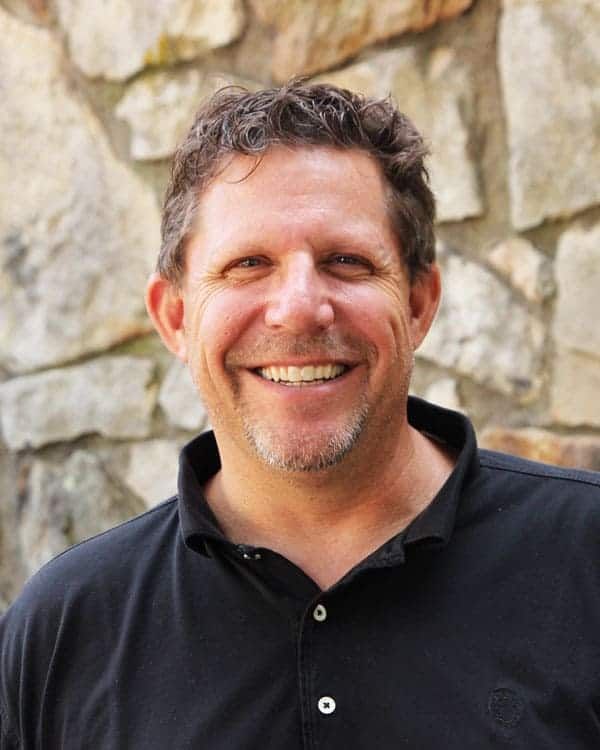The Recovery of Codependency
By Travis Ramsey
It was a standard first call with parents until I began fielding their questions. “How will Brad* get his clothes cleaned? Who fixes his meals for him? How will he wake up on time in the morning?” As I began to understand these questions better, I soon realized that mom and dad had basically taken care of all Brad’s responsibilities his entire life. A young adult, Brad was now at MARR, the furthest he had ever lived from his parents, addicted to alcohol and drugs, and having never learned to wash his clothes, wake up on his own, or make a meal.
Another term often used to describe addiction is chemical dependency. It’s literally true, as addiction is more than a liking or craving, but actually registers in the brain as a need along the same pathway as oxygen and food. Addiction requires not only a substance but another person. While an addict is forsaking all else to take in a substance, he/she will die (or hit their “bottom”) unless someone else is taking care of the things needed to actually survive, i.e. food, shelter, finances, and relationship. Initially, this was the definition of codependency: being in a relationship with an alcoholic or addict. This is someone who needs the addict’s life to be okay as much as the addict needs their drug. And the only way they can continue their addiction is if someone else is cleaning up the wreckage of it. While this remains the natural and normal state for families in active addiction, the characteristics of codependency can arise in a variety of relationships and carry over into all areas of one’s life.
Codependency always develops out of an adaptive change to correct a problem. In families, this problem might be a parent who has just lost his job, a child who is failing in school, a mother suffering from depression, a lonely or bullied child, or a father who becomes abusive when he drinks too much. Because this is too painful for other family members to experience, they lovingly step in to “help” with the problem. Parents might do their child’s homework for them or lobby with school teachers and administrators to make changes in their child’s education. Spouses might cancel their own activities to focus on being sensitive to their partner’s needs. Brainstorming, problem-solving, and long conversations about the problem begin to dominate the family’s time and energy. While these behaviors might actually alleviate the problem temporarily, it may also create the breeding ground for addiction. For addicts, their drug of choice is the solution to their problems. So while the person with the problem is feeling better by using drugs, others in the family, not knowing about the drug use, are trying to fix these problems (which just seem to be getting worse). It’s a vicious and exhausting cycle.
Maintaining his sobriety in his MARR community, Brad felt less need to depend on his parents and his calls home tapered off. His parents were beside themselves. Dad was livid. How was he going to know what to do with Brad’s bills, what to tell Brad’s friends, and how to take care of Brad’s legal troubles? He was adamant that no one else would do these things for his son. Mom took the avoidance personal; she wondered if he felt abandoned by her. Her son’s treatment at MARR meant that she had failed her son, that her love and support weren’t enough to help him, and now he was shunning her.
Though it’s quite healthy to feel concern for someone we love, codependency uses this concern to justify boundary violations as attempts to help the person we love. Their bad feelings make us feel bad, so their problems are our problems. The only way to feel better ourselves is to make them feel better by trying to fix their problems. Brad’s parents knew they were doing too much for their son, but couldn’t stop. Not only did Brad’s addiction grow under their caregiving, but their own sense of purpose depended on Brad’s needs. It’s difficult to know which comes first: many times someone else’s problem brings up our own codependent tendencies, but other times, our own need to be liked and feel important lead us into behaviors that handicap others from addressing their own issues successfully. Why is it so important to us that others around us be happy, comfortable, and pleased with us all the time? Often, codependency is learned at a young age within our own families.
Brad’s father and mother each had their own reasons to be codependent with their son. Like many families, alcohol use was an important part of their leisure activities. His father had also used drugs recreationally as a young adult. How could he possibly tell his son that using drugs and alcohol were not okay when he himself wasn’t sure if his own use was a problem? When Brad’s addiction landed him in treatment, the father felt guilty for his silence. Taking responsibility for his son’s illness, he was compelled to handle all of Brad’s consequences. Brad’s mother grew up with an alcoholic parent. Feeling lost and neglected, children like Brad’s mom may believe there is something wrong with them that caused their family problems. They often attempt to “keep the peace” and make their parents happy so that their own needs are met. Doing everything for her son gave her the feeling of being needed and important, feelings she was deprived of as a child.
In our society, codependency is as deceptive as addiction. It often hides behind “doing the right thing,” obeying God, taking one for the team, and coming to the rescue of others. Though it looks benevolent, codependency serves the giver more than the receiver. Those who suffer from it use other’s dependence and approval as a means to feel loved without risking the disclosure of their own needs and doing that which is truly best for them. Like addiction, codependency is a way of coping with our true feelings by avoiding them and managing our external world. Drugs make the world a safe place for addicts and alcoholics; the neediness and approval of others make it safe for codependents. And it is a terrifying endeavor to reach out for help.
Unfortunately, Brad’s parents found it much easier to clean up their son’s messes than to attend a support group for themselves. Though they all agreed that returning home was not the best for Brad’s sobriety, neither Brad, his father, nor his mother were able to make the necessary changes to support Brad’s recovery. If you are in a relationship with an addict or alcoholic, it is natural to experience codependency. It is tempting to believe that your efforts to help your loved one will influence them to stop using. This is simply not true. Finding peace and healing for yourself is the greatest thing you can give an alcoholic or addict in your life. Please reach out for help. You’re worth it.
Two of MARR’s counselors, Patrice Alexander and Travis Ramsey, talk about their experience working with families of MARR clients over the years.





